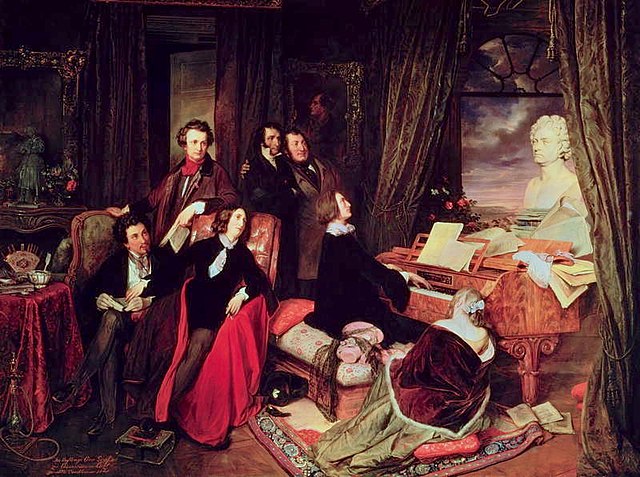The evolution of music is a captivating journey that takes us through various eras, styles, and artistic expressions. From the early vocalizations of prehistoric humans to the experimental sounds of contemporary composers, music has continuously transformed to reflect the cultural, social, and technological changes throughout history. This article provides an overview of the key moments and characteristics that have shaped the history of music.
I. Purpose of Music
Music has been an integral part of human culture and experience since ancient times. Its primary purposes include communication, expression, and entertainment. Music enables people to convey emotions, tell stories, and share experiences. It also plays a crucial role in religious ceremonies, rituals, and celebrations, bringing communities together and fostering a sense of unity.
II. Early Forms of Music
Early humans used their voices to create simple melodies and rhythms. These early forms of music were primarily used in rituals, storytelling, and communication.
As societies developed, so did their musical instruments. Early instruments like bone flutes, drums, and harps allowed for greater complexity and variety in musical expression.
During the Middle Ages period, music was used for religious worship and was closely tied to the Christian church. Gregorian chant, or plainchant, emerged as the dominant form of vocal music, characterized by its simple, unaccompanied melodies.
III. In Ancient Times
The great ancient civilizations, particularly the Egyptians, Greeks, and Romans, were the first to have organized and unified musical structures, with music playing an essential role in many daily activities and ceremonies.
In ancient Egypt and Mesopotamia, music was an essential part of religious ceremonies and daily life. Instruments like lyres, harps, and flutes were commonly used.
Ancient Greek music was heavily influenced by its mythology, poetry, and drama. Key composers like Terpander and Mesomedes created music for various purposes, from religious hymns to theatrical performances. The Seikilos epitaph, world's oldest lyric song, dates back to Ancient Greece, and people can still sing and play it today.

Roman music was influenced by Greek music, but also incorporated elements from other cultures. Notable composers included Gaius Valerius Catullus and Horace, who wrote lyric poetry set to music.
IV. Renaissance Period (1400 A.D. to 1600 A.D.)
The Renaissance was a time of cultural rebirth, marked by renewed interest in the arts, science, and humanism. Music in this period was characterized by increased complexity in melody, harmony, and texture. Polyphony, or the use of multiple independent voices, became more common.
Important Renaissance composers include Josquin des Prez, Giovanni Pierluigi da Palestrina, and Thomas Tallis. Their compositions, such as Palestrina's "Pope Marcellus Mass," remain iconic examples of Renaissance choral music. Renaissance music laid the groundwork for the development of Baroque music, with its emphasis on emotional expression and elaborate ornamentation.

V. Baroque Period (1600 A.D. to 1750 A.D.)
The Baroque period was characterized by extravagant artistic expression and a focus on emotional intensity. Baroque music is marked by its rich harmonies, intricate textures, and dramatic contrasts. The use of the basso continuo, a continuous bass line, provided a solid foundation for melodic and harmonic exploration.
Johann Sebastian Bach, George Frideric Handel, and Antonio Vivaldi were among the most influential Baroque composers. Their works, such as Bach's "Brandenburg Concertos" and Handel's "Messiah," are celebrated for their complexity and emotive power. Baroque music's expressive qualities and instrumental virtuosity paved the way for the development of the Classical period's emphasis on balance, clarity, and simplicity.

VI. Classical Period (1750 A.D. to 1830 A.D.)
The Classical period (1750-1820) focused on achieving balance, clarity, and structure. This era saw the emergence of sonata form and the development of the symphony, concerto, and string quartet. This period saw the birth of a unique new singing form that combined music and drama, which is still known today as opera.
Major composers of the Classical period include Wolfgang Amadeus Mozart, Joseph Haydn, and Ludwig van Beethoven. Their works, such as Mozart's "Symphony No. 40," Haydn's "The Creation," and Beethoven's "Symphony No. 9," exemplify the elegance and grace of the Classical style.

VII. Romantic Period (1810 A.D. to 1900 A.D.)
The Romantic period (1800-1910) was marked by heightened emotional expression, a focus on individuality, and a fascination with nature and the supernatural. Music from this era often featured expanded forms, rich harmonies, and sweeping melodies. Romantic love was a common theme. In some cases, classical-era formal structures were kept, but in many others existing genres, forms and functions were improved.
Significant Romantic composers include Frederic Chopin, Pyotr Ilyich Tchaikovsky, and Richard Wagner. Their works, such as Chopin's "Nocturnes," Tchaikovsky's "Swan Lake," and Wagner's "Ring Cycle," showcase the passion and drama of the Romantic period.
VIII. Modern Period
The Modern period (20th century to present) is marked by a rapid evolution of musical styles, driven by technological advancements, globalization, and cultural shifts. Music encompasses a wide array of styles, from experimental avant-garde compositions to popular genres like jazz, rock, and electronic music. Key aspects include the use of new instruments, innovative techniques, and diverse influences.
Influential modern composers include Igor Stravinsky, Aaron Copland, and John Cage. Their works, such as Stravinsky's "The Rite of Spring," Copland's "Appalachian Spring," and Cage's "4'33"," represent the daring experimentation and stylistic diversity of the Modern period. Modern music has had a profound impact on the way we experience and create music, from the rise of recording technology to the global exchange of musical ideas and traditions.

Conclusion
The evolution of music is a fascinating story of innovation, creativity, and cultural exchange. By understanding the history of music, we can better appreciate the diverse and dynamic art form it has become today. As we continue to explore new frontiers in music, we are reminded of the power of this universal language to inspire, connect, and bring joy to the human experience.
You can watch the video below to understand more about the evolution of music through the ages:
